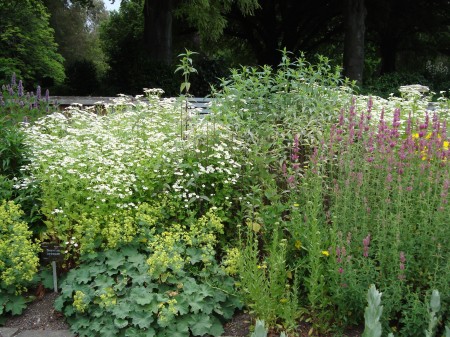Improve Circulation With Herbs: Some people feel the cold so dreadfully, and they can do nothing to keep warm. In extreme conditions, this is called ‘Raynaud’s Disease’. Some medications can cause ‘Raynaud’s Disease’. Remember that it is essential that adequate exercise is taken, to stimulate the blood flow. But here are some herbal suggestions, to add to your exercise regime, which might help you to feel warmer.
Cayenne Pepper: This is one of the best herbs for circulation problems. Just a little Cayenne Pepper can be sprinkled into the socks, or into the shoes. Believe me, this works very well to increase the warmth in the body. Too much for too long can cause sweating and over-heating, so use it very moderately. The over-heating effect of Cayenne can be very useful if you are doing a detox, as this aids the removal of toxins through the pores of the skin, and stimulates the other organs to eliminate waste, and function as they should.
Other, similar herbs which have a similar effect to Cayenne pepper, and which can be sprinkled into the shoes to improve circulation are Black Pepper and Ginger.
Ginger Tea For Circulation: Ginger tea is another easy and simple method to stimulate circulation and promote good general health. You can use either powder ginger, or root ginger to make your tea. Ginger tea is safe to drink, and four or five cups of ginger tea can be taken each day. Use half a teaspoon of ginger powder to one cup of tea, or more if you like. With fresh ginger, chop up a tablespoon of ginger roots, put into your cup, and pour boiling water over. Infuse for several minutes, until it has cooled, then drink. You can use these ginger roots later in the day, as there is still goodness left in them after making one tea.
The Ginger Foot Bath: This is another simple remedy for improving the circulation, and stimulating the digestion. Put a tablespoon of powdered ginger into a couple of litres of hot water. Cool until the ginger foot bath preparation is a comfortable temperature. Soak the feet for 10 minutes in the foot-bath, topping up with more hot water if necessary.
Garlic is one of the best home remedies for improving the circulation. Use garlic every day in your cooking. Fresh garlic is really best, if you can handle it. Chop up a teaspoon of garlic very finely and take as you would a medicine, with a glass of water or your favourite milk. Some people find garlic just too strong for their delicate digestive systems. If you are one of these, then use another remedy instead of garlic.
The List of Herbs Which Aid Circulation Are:
Black Pepper
Cayenne Pepper
Cinnamon
Clary Sage
Garlic
Geranium
Ginger
Hyssop
Lemons
Rosemary
